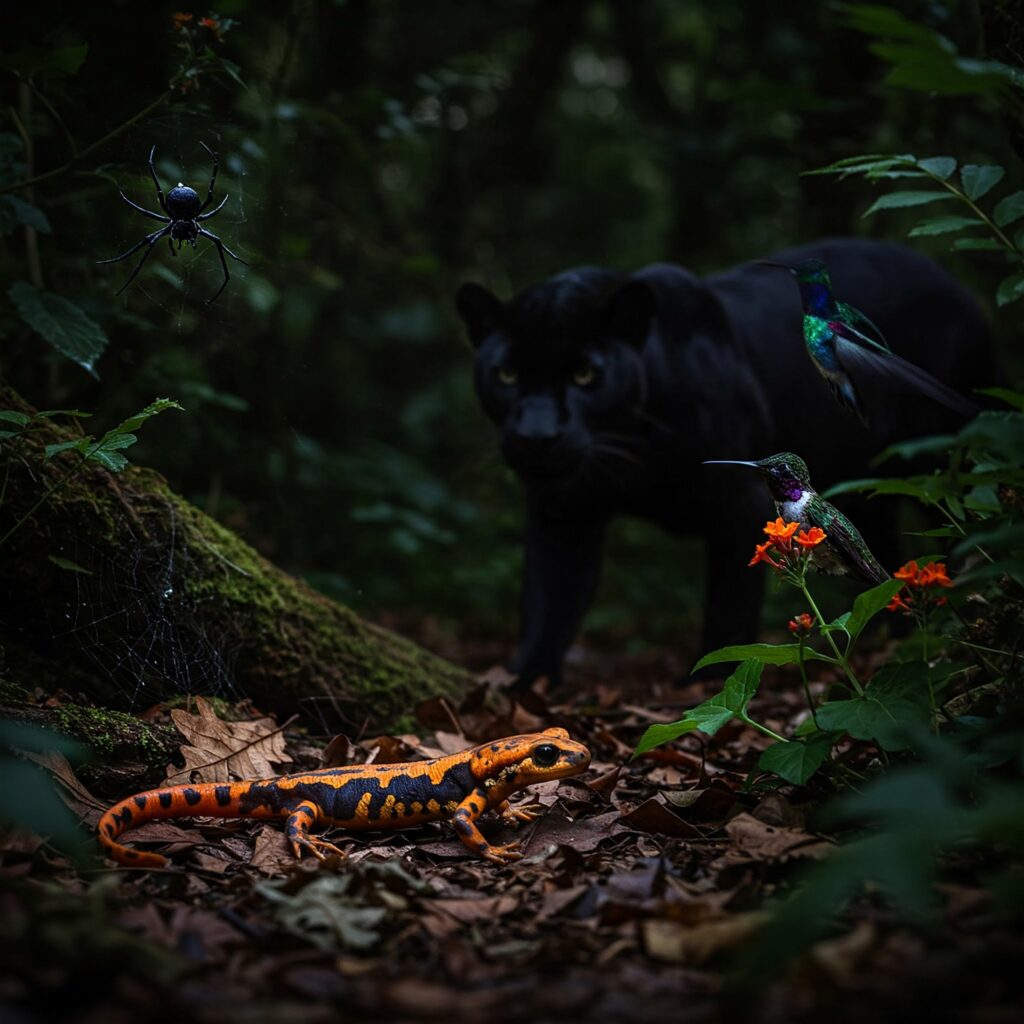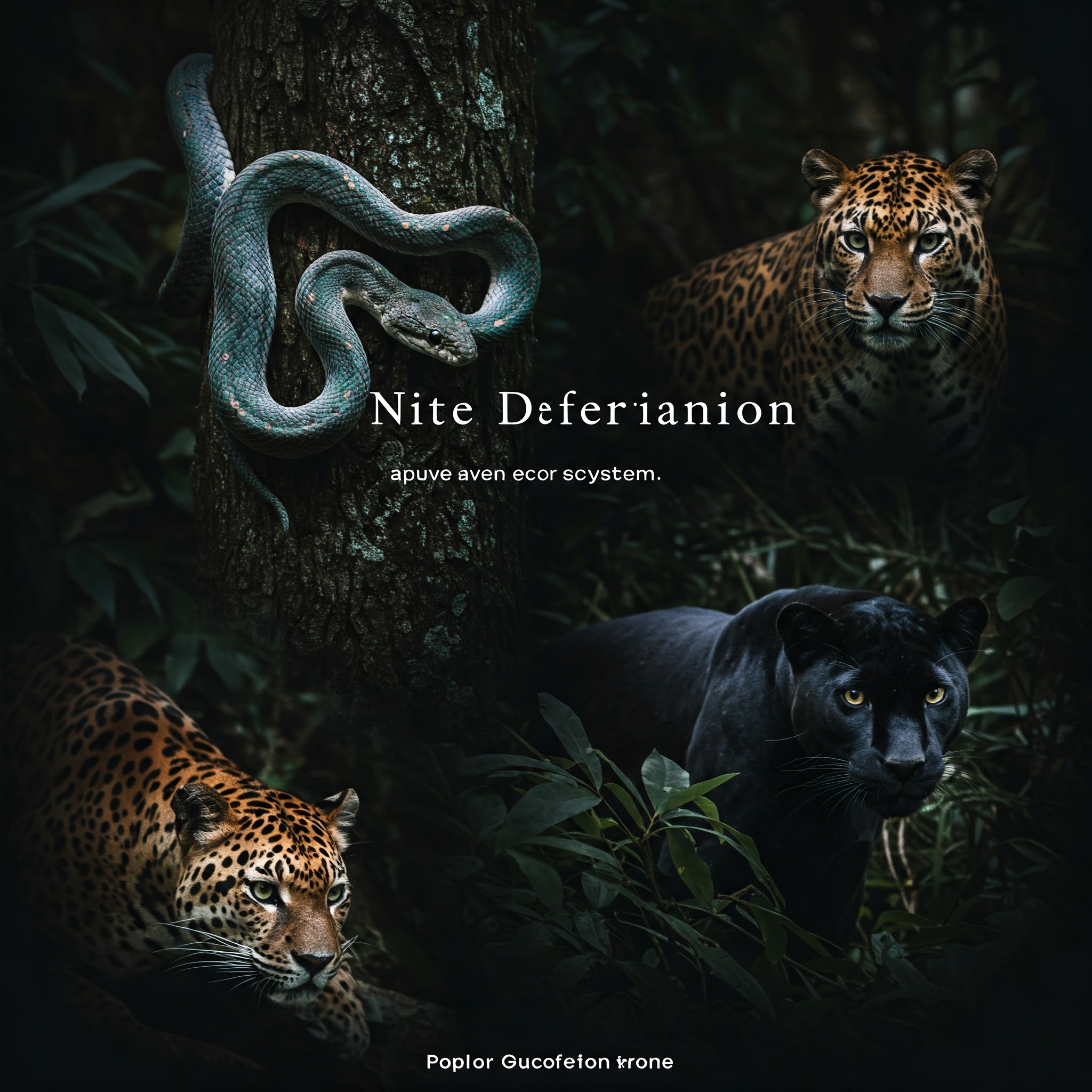Introduction
Ecosystems are dynamic networks of living organisms and their physical environments. Within these networks, various species coexist, interact, and depend on each other for survival. However, resources such as food, space, and shelter are often limited, leading to potential competition. If multiple species rely on the same resources, competitive exclusion may occur, where one species outcompetes another, potentially driving it to local extinction. To avoid such outcomes, nature has evolved a remarkable strategy called niche differentiation or resource partitioning.
Niche differentiation is a fundamental ecological concept that explains how species with overlapping needs manage to coexist by utilizing different resources or the same resources in different ways. This reduces direct competition and promotes biodiversity and ecosystem stability. This article explores the concept of niche differentiation, its mechanisms, examples from different ecosystems, and its overall role in ecological balance.
Understanding Ecological Niches
What is a Niche?
In ecology, a niche refers to the role or function of a species within an ecosystem. It includes everything that defines a species’ existence — its habitat, feeding habits, reproductive strategy, time of activity, and interactions with other species.
There are two important types of niches:
- Fundamental niche: The full range of environmental conditions and resources a species can theoretically use.
- Realized niche: The portion of the fundamental niche that a species actually occupies due to competition or other ecological constraints.
When two or more species have overlapping niches, they are likely to compete for the same resources. This is where niche differentiation becomes crucial.
What is Niche Differentiation?
Niche differentiation, also known as resource partitioning, is the process by which competing species use the environment differently in a way that helps them coexist. It allows species with similar needs to avoid direct competition by specializing in distinct aspects of resource use. Over evolutionary time, natural selection favors traits that reduce overlap between species, enabling them to occupy slightly different niches.
This differentiation can occur along several ecological dimensions:
- Spatial (different habitats or microhabitats)
- Temporal (different times of activity)
- Trophic (different food sources or feeding methods)
- Behavioral (different strategies or interactions)

Mechanisms of Niche Differentiation
1. Spatial Differentiation
Species may use different areas of a habitat to avoid competition. For instance, birds living in a forest may occupy different vertical layers — one species forages on the forest floor, another in the understory, and another in the canopy.
2. Temporal Differentiation
Species may be active at different times of the day or year. This is common in desert ecosystems where nocturnal and diurnal animals avoid competing for limited water and food.
3. Trophic Differentiation
Closely related species may evolve differences in diet. For example, two insect species may feed on different parts of the same plant — one on leaves, the other on roots — thus reducing food competition.
4. Morphological Adaptation
Physical adaptations may allow species to exploit different resources. Darwin’s finches on the Galápagos Islands have different beak shapes and sizes suited to their specific diets, such as seeds, insects, or nectar.
5. Behavioral Adaptation
Changes in behavior can also lead to niche differentiation. For example, some animals change hunting strategies or form symbiotic relationships that reduce competition with others.
Case Studies and Real-Life Examples
1. Warblers in North American Forests
A classic example of niche differentiation is provided by the five species of warblers in North American coniferous forests. Although they all feed on insects in the same trees, each species forages in different parts of the tree — some at the top, others in the middle or bottom branches. Additionally, they may hunt at different times or use different hunting techniques. This spatial and behavioral partitioning reduces direct competition and allows their coexistence.
2. Lions and Leopards in African Savannas
Lions and leopards both prey on herbivores, but they differ in hunting strategies and habitats. Lions hunt in groups and often target large prey in open areas, while leopards are solitary hunters that use stealth and hunt in denser vegetation or trees. This trophic and spatial differentiation minimizes competition.
3. Phytoplankton Species in Aquatic Ecosystems
Phytoplankton species coexist in nutrient-limited water bodies by utilizing different light wavelengths and nutrients at varying depths. Some species dominate at the surface, while others thrive deeper, where light intensity and nutrient types differ. This vertical zonation is a form of niche differentiation that helps sustain aquatic biodiversity.
4. Indian Forest Ecosystems
In Indian tropical forests, niche differentiation is seen among herbivores like the chital (spotted deer) and sambar deer. While both are grazers, they prefer different types of vegetation and terrain — chitals graze in open grasslands, while sambars prefer dense undergrowth. This reduces food competition and ensures sustainable coexistence.
Ecological Significance of Niche Differentiation
1. Reduces Interspecific Competition
The most direct benefit of niche differentiation is the reduction of competition among species. This allows more species to occupy the same habitat without excluding one another.
2. Enhances Biodiversity
By allowing multiple species to coexist, niche differentiation contributes to species richness in an ecosystem. It ensures that ecological niches are filled by a variety of organisms, each playing a unique role.
3. Promotes Ecosystem Stability
When resources are divided among species, the ecosystem becomes more resilient to disturbances. Functional redundancy — where different species perform similar roles — ensures that if one species declines, others can maintain ecological functions.
4. Drives Evolutionary Adaptation
Niche differentiation encourages specialization and the evolution of traits that enable species to use distinct resources. This contributes to adaptive radiation, a process by which species evolve rapidly to exploit different ecological niches.
Niche Differentiation and Competitive Exclusion Principle
The competitive exclusion principle, formulated by Gause, states that two species competing for exactly the same resources cannot stably coexist. Eventually, one will outcompete the other. Niche differentiation acts as a counter to this principle by reducing the extent of competition.
Through evolutionary pressures and natural selection, species evolve mechanisms to reduce direct resource overlap. In effect, niche differentiation is nature’s solution to the competitive exclusion dilemma.

Challenges and Limitations
While niche differentiation helps maintain species diversity, it is not always a perfect solution. Several factors can limit its effectiveness:
- Habitat destruction and fragmentation reduce the variety of available niches.
- Invasive species may disrupt existing niche dynamics by introducing new competition.
- Climate change can alter ecosystems rapidly, making established niche specializations obsolete.
- In resource-scarce environments, differentiation might be minimal, leading to intensified competition.
Therefore, human impact on ecosystems can weaken the natural mechanisms of niche differentiation, threatening biodiversity.
Conclusion
Niche differentiation is a cornerstone of ecological theory and biodiversity conservation. It explains how ecosystems maintain a complex web of life despite the competition for limited resources. By evolving to occupy slightly different niches, species can coexist and thrive in shared habitats. This process not only reduces competition but also enriches ecosystems through diverse roles and functions.
In a time when ecosystems are under increasing pressure from anthropogenic activities, understanding and preserving the natural mechanisms like niche differentiation is vital. It highlights the delicate balance in nature and the need to maintain diverse habitats where species can continue to specialize and coexist without conflict.
Summary Points
- A niche defines a species’ role in an ecosystem, including resource use and interactions.
- Niche differentiation allows species to reduce competition by occupying different niches.
- It can occur through spatial, temporal, trophic, behavioral, or morphological differences.
- Examples include warblers, lions and leopards, phytoplankton, and Indian herbivores.
- It supports biodiversity, ecosystem stability, and evolution.
- It counters the competitive exclusion principle, enabling species coexistence.
- Human activities can disrupt niche differentiation, leading to ecological imbalance.




